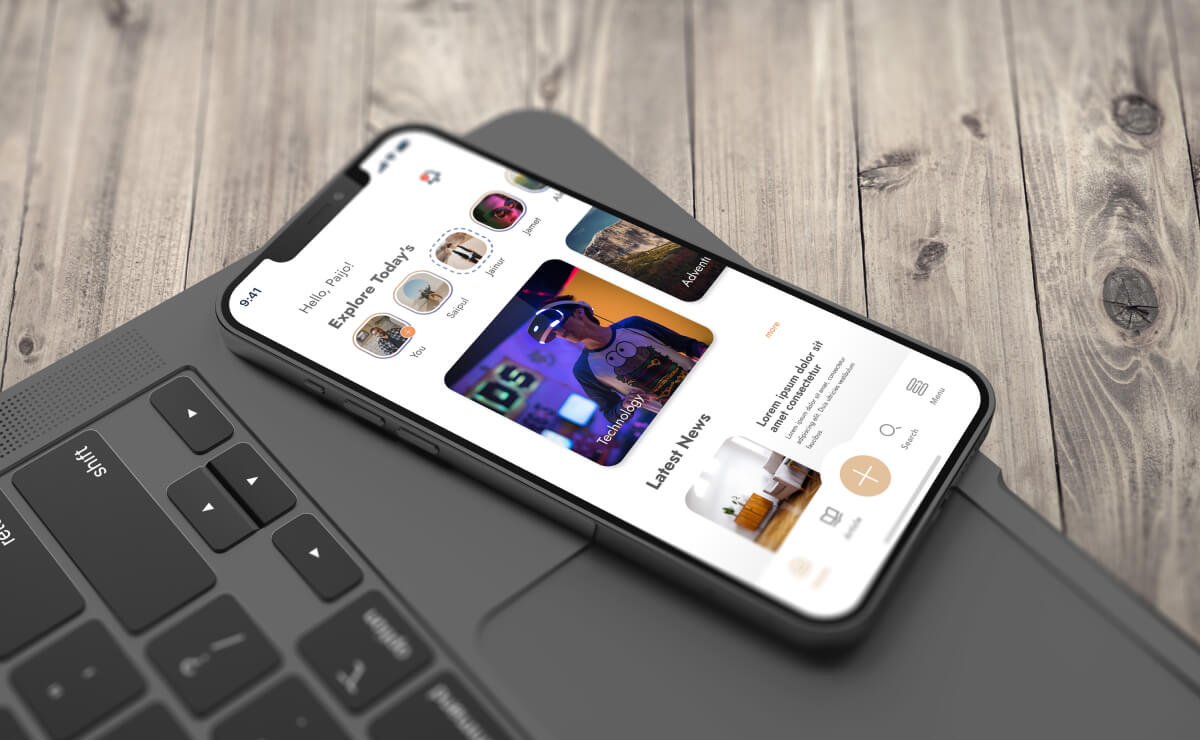Difference between Android and iPhone Application Development Explained
Entrepreneurs always get baffled when it comes to selecting a mobile app development platform. Both iOS and Android OS platforms have some architectural similarities but many differences in development and maintenance processes. In this blog, we will go through the top differences between iOS and Android apps.
So, let’s dive in.
Top Points that Differentiate iOS and Android Apps
Both iPhone and Android apps are fundamentally different but here we will focus on six points that will help you find the right platform for your next application development project.
1. Identify Target Audience
the company must identify its target audience while making a plan for developing the business app. As an entrepreneur or a business person, you need to select the platform as per the preference given by the target users. Talking about iOS and Android users, we witness variations in demographics. For example, in the USA, people between the age of 18 to 34 years tend t use iOS whereas people in the 35+ age group prefer Android.
Talking about Australia, Android OS enjoys a larger share of 53.6% than the same for iOS at 46.1% as of March 2022. However, it is fair to mention that though Android phones dominate the smartphone market in Australia, iOS has covered a significant share in recent years.

Courtesy: Statista
Such data related to the target audience can help companies build their future app more precisely. As a result, the chances of making your app successful can be increased.
2. Development Duration
This is another crucial parameter to consider when you opt for developing a customised application. Android application development and iOS application development have different development times. On average, Android application takes 30% to 40% longer time as compared to iOS application. It is specifically because of the code complexity and availability of a wide range of devices with different screen sizes.
However, when it comes to application acceptance at the respective app store, Apple App Store has stringent requirements for application acceptance that can last up to one week. On the other hand, Google Play has automated tests that take relatively a shorter time in approving the app than App Store.
3. Development Cost
Application development cost depends on multiple factors including development duration and development approach or technologies. Every company tends to find the answer to the question- how much does it take to build a feature-rich app? Whether you hire Android app developers or iOS app developers, you need to keep some amount aside for development, maintenance, and marketing costs.
Comparing Android and iOS apps, we need more valuable resources to build a customised Android app and it takes more time to develop than its iOS counterpart. As a result, Android app development is costlier than iOS app development. Along with this, you need to spend some money for publishing an app on the platform. App Store charges $99 every year and Google Play takes a one-time fee of $25.
4. Development Process
Desired features and functionality determine the complexity of the app development process.
When it comes to making a custom application for different operating systems, here are the key aspects of the development process that impact the cost.
- Languages and IDEs
Swift and Kotlin are official languages for iOS app development and Android app development respectively. However, when Android developers used Java as a programming language, the development duration was more due to additional coding. What’s more, native app development for Android and iOS platforms also depends on IDEs (Integrated Development Environments) suggested by Google and Apple respectively. These days Android app developers use Android Studio and iOS app developers use Xcode as IDEs.
- Approaches
We can broadly divide the mobile application development process into two categories- native app development and cross-platform app development. As compared to the native app development approach, cross-platform development facilitates you to launch the product quickly and reach a wider audience. What’s more, as compared to native development, cross-platform app development requires less money.
- Fragmentation
Here, iOS app development has a clear advantage over Android app development. As Apple has a limited range of devices as compared to Android, device fragmentation is less in it. Simply put, Android apps need to get tested for dozens of devices that have different screen sizes and even OS versions. It can increase fragmentation and complexity in the development process. The duration for QA also increases for Android apps and so does the development cost.
5. Design and Experience
UI design and user experience (UX) are major cost-determining factors for custom business apps. However, the UIs of iOS and Android platforms are quite different though both these platforms tend to follow a minimalistic approach while supporting simple visuals. Some of the distinct characteristics between Android and iPhone apps are visible in-
- Pop-up notifications
- Size of icons
- Screen resolutions
- Typography
- Navigation bar
When you hire Android app developers or iPhone app developers, they make the design strategy different from each other.
6. Monetisation Strategy
As per the recent report, Android app downloads have reached 111 billion and iOS app downloads have reached 32 billion in the year 2021. The number of app downloads and consumer spending on apps are two significant factors that have a direct impact on the app monetisation strategy.
When it comes to consumer spending, the story is completely different. The average app purchase price per user for each OS is quite different. It is $0.47 for Android and $1 for iPhone owners. It reflects the higher income of the Apple App Store than that of Google Play. You need to make app monetisation based on these factors.
You can get more profit and increase the revenue from mobile apps by implementing three ways-In-app purchases, paid applications, and an ad-based model. The concept of paid apps is successful on the iOS platform as Android users tend to download free apps from the Play Store. The in-app purchase model is equally effective on both Android and iOS platforms by generating over 48% of mobile app revenue.
Quick Look
| Aspects to Consider | Android App Development | iOS App Development |
| Global Market Share (%) | 70 | 30 |
| Target Audience | Prominently Asia and Africa | Prominently USA, Europe, and Australia |
| Development Duration | Take More Time | Quicker than Android |
| Development Cost | More than iOS | Less Expensive |
| Programming Languages | Java, Kotlin | Objective-C, Swift |
| Distribution Platforms | Google Play and sideloading | Apple App Store |
Concluding Lines
Choosing between Android application development and iPhone application development is a difficult task for entrepreneurs. Hope this guide will help you choose the right platform for your upcoming project. It is better to consult a reputed mobile application development company to know more about these platforms in line with your business requirements and long-term objectives based on a dedicated business app.
Devs In India is your reliable outsourcing partner for digital transformation services. As a one-stop destination, we assist you to hire web designers, Android app developers, iPhone app developers, and other IT professionals through our flexible engagement models. Whether you want to book a free consultation or get a quote for your project, simply drop us a line at info@devsinindia.com, and our experienced consultants will get back to you soon!





